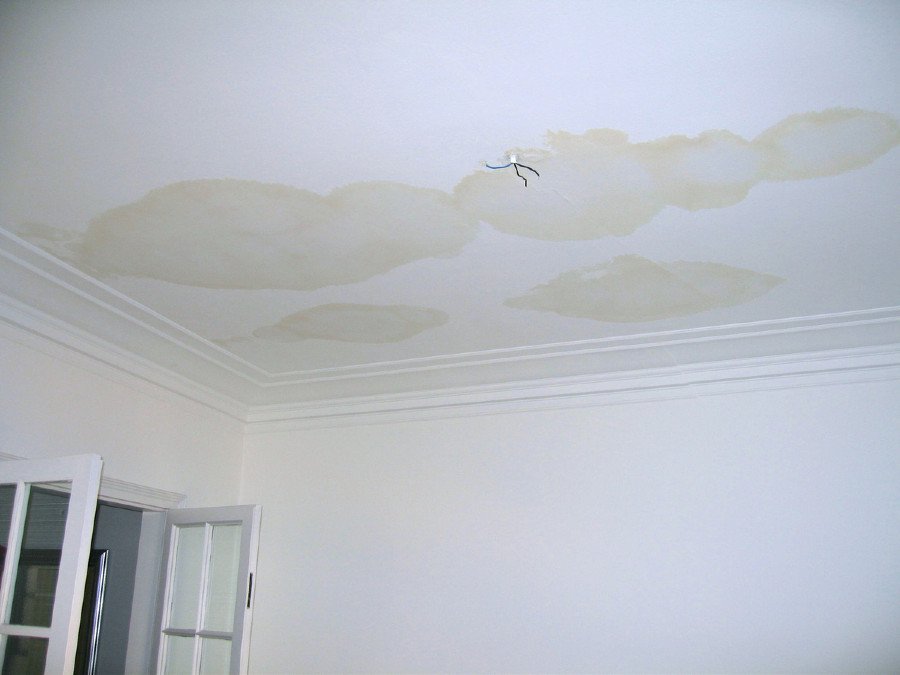Water damage is a homeowner’s nightmare, and one of the common signs that you might encounter is water damage on your ceiling. Recognizing the signs of water damage early is crucial, as it can save you from costly repairs and potential health hazards. In this article, we will explore what water damage look like on a ceiling, helping you identify the issue and take prompt action.

Understanding Water Damage on Ceilings
Water damage on ceilings can manifest in various ways, and it’s important to be vigilant in spotting the signs. The appearance of water damage may vary depending on the cause and severity of the issue. Below are some common indicators of water damage on a ceiling:
1. Discoloration and Stains
One of the most apparent signs of water damage on a ceiling is discoloration or staining. You may notice brown, yellow, or grayish patches on the ceiling, which are typically a result of water infiltrating the surface. These stains are often irregularly shaped and may spread over time if the water damage persists.
2. Bubbling or Peeling Paint
If you observe areas of your ceiling where the paint is bubbling or peeling, it could be a clear indication of water damage. The moisture from water infiltration can cause the paint to lose adhesion to the ceiling surface, resulting in these visible imperfections.
3. Sagging or Drooping Ceiling
In more severe cases of water damage, the affected area of the ceiling may begin to sag or droop. This is a clear sign that there is a significant amount of moisture or water accumulating within the ceiling structure. A sagging ceiling is a serious issue and should be addressed immediately to prevent further damage or even a collapse.
4. Mold and Mildew Growth
Another concerning sign of water damage is the growth of mold and mildew on the ceiling. These fungi thrive in damp, humid environments and can develop on ceilings that have sustained water damage. Mold and mildew growth not only indicate the presence of water damage but also pose health risks to occupants.
5. Musty Odor
Water damage on a ceiling can lead to a distinct musty odor. If you notice a persistent, unpleasant smell in a room, it might be a sign of water damage. The odor is often a result of mold or mildew growth in areas affected by moisture.
Read too: What To Do With Water Bubble In Ceiling
Causes of Water Damage on Ceilings
To address water damage effectively, it’s important to understand the potential causes. Some common reasons for water damage on ceilings include:
- Roof Leaks: Damaged or missing shingles, compromised flashing, or clogged gutters can lead to roof leaks, which allow water to penetrate the ceiling.
- Plumbing Issues: Leaking pipes, faulty plumbing fixtures, or burst water supply lines can result in water damage on ceilings, particularly in areas directly beneath the plumbing.
- Condensation: Poor ventilation and high humidity levels can cause condensation to accumulate on the ceiling, leading to water damage over time.
- Structural Issues: In some cases, water damage may be the result of structural problems in the building, such as cracks or gaps that allow water to seep in.
Addressing Water Damage
Promptly addressing water damage is essential to prevent further deterioration and more extensive repairs. Here are steps to take when you suspect water damage on your ceiling:
- Identify the Source: The first step is to determine the source of the water damage. Inspect your roof, plumbing, and the area above the affected ceiling for leaks or other issues.
- Temporary Mitigation: If there is active leaking or the ceiling is sagging, place containers or buckets to catch the water and prevent further damage.
- Consult a Professional: For extensive or recurring water damage, it’s advisable to consult a professional contractor who specializes in water damage restoration. They can accurately assess the damage, provide necessary repairs, and address any mold or mildew issues.
- Repair and Restoration: After the source of the water damage has been resolved, repair and restore the affected ceiling. This may involve patching, repainting, or even replacing damaged sections.
Preventing Water Damage
Prevention is always better than cure. To avoid water damage on your ceiling, consider the following preventive measures:
- Regular roof maintenance to address potential leaks.
- Inspection and maintenance of plumbing systems.
- Proper ventilation to reduce condensation in your home.
- Addressing structural issues that could lead to water intrusion.
Conclusion
Recognizing the signs of water damage look like on a ceiling is crucial for maintaining the integrity and safety of your home. Water damage can lead to not only costly repairs but also health hazards. By understanding what water damage looks like on a ceiling and taking timely action to address the issue, you can protect your home from further damage and enjoy a safe and comfortable living space.